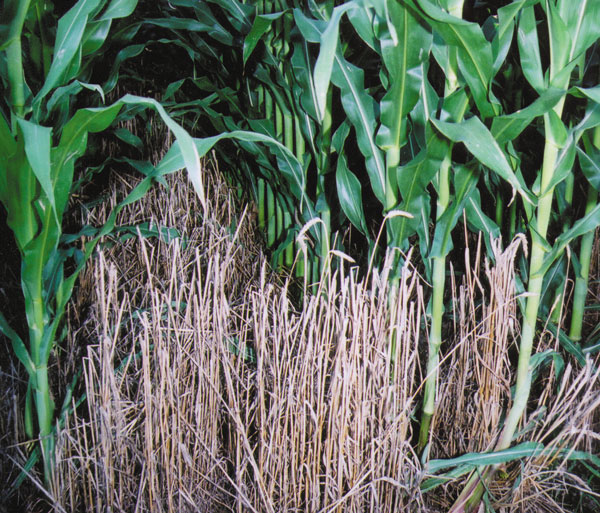December 5, 2013

In the minds of many, a freshly tilled field is picturesque — clean and ready for the next planting.
But according to a soil health expert, what looks good to the eye, isn’t always good for the soil — or a farmer’s bottom line.
On World Soil Day, USDA’s Natural Resources Conservation Service celebrated the importance of healthy soils and shared how farmers and ranchers can help care for it through conservation practices like no-till.
Conventional thought suggests the fluffing action from tillage allows for better seed placement, but Ray Archuleta, NRCS conservation agronomist, said that no-till systems, especially when combined with cover crops, are better — and lead to healthier, more drought-resistant soil.
Archuleta, who works at the agency’s East National Technology Center in Greensboro, N.C., said no-till has significant financial benefits for producers, too.
“No-tillage can save thousands of dollars every year in fuel, labor and equipment maintenance,” Archuleta said. “The key is to let the soil organisms do the work.”
Tennessee grain farmer Bartt McCormack has refrained from tilling — instead using no-till planting — for more than 35 years. He knows first-hand why no-till with cover crops has created a favorable soil ecosystem. They’ve had a positive impact on his bottom line, he said.
“We’re a 90-95 percent no-till operation,” he said. “When you start pulling iron over 6,000 acres, it takes a lot of labor and a lot of fuel.”
McCormack grew up using tillage on the family farm, but after enrolling in NRCS programs, the farm began implementing no-till on more and more acres.
But McCormack cautions there is a process in transitioning to a no-till operation. He advises that farmers have to re-tool and change management practices on herbicides and rotations, but most importantly, they need to have an open mind at the possibilities that no-till with cover crops can bring.
“It’s not like changing a pair of pants,” he said.
McCormack has seen a boost in yields since he made the transition to no-till. “I’ve seen a 60 bushel difference in yield,” he said. “That’s a tremendous amount.”
On fields where he also planted cover crops, McCormack said his yields were event better. “Looking back, plowing up my fields was reducing my yields.”
Like a growing number of farmers across the nation, McCormack is sold on the benefits of improving soil health. He plans to continue experimenting with different varieties and combinations of cover crops, including planting multiple species on nearly all of his 6,000 no-till acres this fall.
The Food and Agriculture Organization of the United Nations designated Thursday, Dec. 5 as World Soil Day.
You May Also Like




